A quick technical test
Posted by David Zaslavsky onshhh, the computers are thinking :-P
shhh, the computers are thinking :-P
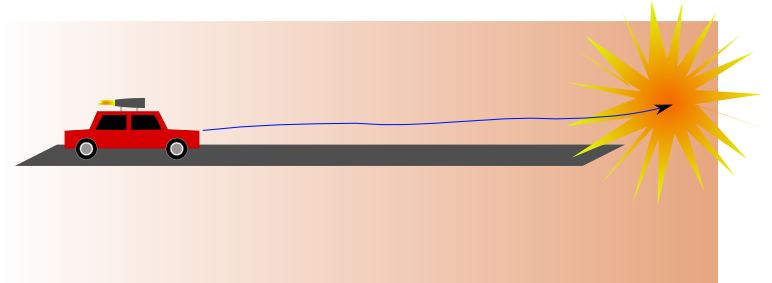
It’s that time again: Mythbusters is back! And they sure know how to kick things off with a bang — or better yet, a prolonged burn!
For the 10th anniversary of the show, the Mythbusters revisited the very first myth they ever tested, the JATO rocket car. Wikipedia has the story in what appears to be its most common form:
The Arizona Highway Patrol came upon a pile of smoldering metal embedded into the side of a cliff rising above the road at the apex of a curve. the wreckage resembled the site of an airplane crash, but it was a car. The type of car was unidentifiable at the scene. The lab finally figured out what it was and what had happened.
It seems that a guy had somehow gotten hold of a JATO unit (Jet Assisted Take Off - actually a solid fuel rocket) that is used to give heavy military transport planes an extra ‘push’ for taking off from short airfields. He had driven his Chevy Impala out into the desert and found a long, straight stretch of road. Then he attached the JATO unit to his car, jumped in, got up some speed and fired off the …
Justice League of the Internet, unite! So went the call from the Elders of the Internet to make a last stand against the long-feared reawakening of the… uh, legislative process. (No, there are no Elders of the Internet. I just couldn’t resist linking to that clip.)
Internet privacy advocates are up in arms these days over the Cyber Intelligence Sharing and Protection Act, a bill which modifies the guidelines by which information, including personal and/or private information, may be shared among technology companies and the federal government. CISPA was first introduced last year as House Resolution 3523, and passed by the House of Representatives, but it stalled and died out in the Senate, perhaps partially in response to strong public opposition.
Now, CISPA is back, in the form of House Resolution 624. This was passed by the House last week, and is headed to the Senate for discussion. The text of the bill is quite similar to last year’s version, so most of what I wrote about it last year is still applicable, but there are a few things I want to update in light of new information, plus some new provisions in the bill to look …
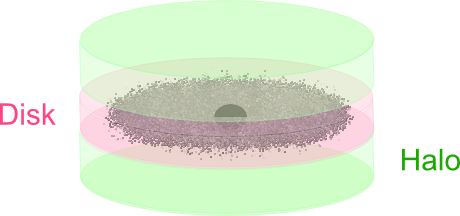
Last week, I wrote about the announcement of the first results from the Alpha Magnetic Spectrometer: a measurement of the positron fraction in cosmic rays. Although AMS-02 wasn’t the first to make this measurement, it was nevertheless a fairly exciting announcement because they confirm a drastic deviation from the theoretical prediction based on known astrophysical sources.
Unfortunately, most of what you can read about it is pretty light on details. News articles and blog posts alike tend to go (1) Here’s what AMS measured, (2) DARK MATTER!!!1!1!! All the attention has been focused on the experimental results and the vague possibility that it could have come from dark matter, but there’s precious little real discussion of the underlying theories. What’s a poor theoretical physics enthusiast to do?
Well, we’re in luck, because on Friday I attended a very detailed presentation on the AMS results by Stephane Coutu, author of the APS Viewpoint about the announcement. He was kind enough to point me to some references on the topic, and even to share his plots comparing the theoretical models to AMS (and other) data, several of which appear below. I never would have been …

A fair amount of what I write about here is about accelerator physics, done at facilities like the Large Hadron Collider. But you can also do particle physics in space, which is filled with fast-moving particles from natural sources. “All” you need to do is build a particle detector, analogous to ATLAS or CMS, and put it in Earth orbit. That’s exactly what the Alpha Magnetic Spectrometer (AMS) is. Since 2011, when it was installed on the International Space Station, AMS has been detecting cosmic electrons and positrons, looking for anomalous patterns, and today they presented their first data release.
Let’s jump straight to the results:
This plot shows the number of positrons with a given energy as a fraction of the total number of electrons and positrons with that energy, \(\frac{N_\text{positrons}}{N_\text{electrons} + N_\text{positrons}}\). The key interesting feature, which confirms a result from the previous experiments PAMELA and Fermi-LAT, is that the plot rises at energies higher than about \(\SI{10}{GeV}\). That’s not what you’d normally expect, because most physical processes produce fewer particles at higher energies. (Think about it: it’s less likely that you’ll accumulate …
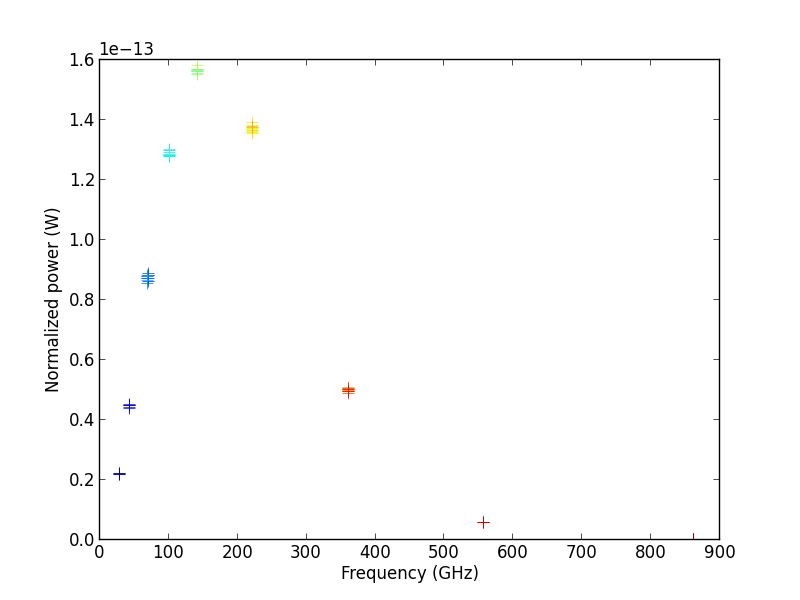
Oh, I kid. Despite the name, nothing about this post is a prank (except perhaps for the title).
It’s been a week and a half since the Planck collaboration released their measurements of the cosmic microwave background. At the time, I wrote about some of the many other places you can read about what those measurements mean for cosmology and particle physics. But it’s a little harder to find information on how we come to those conclusions. So I thought I’d dig into the science behind the cosmic microwave background: how we measure it and how we manipulate those measurements to come up with numbers.
With that in mind, what did Planck actually measure? Well, the satellite is basically a spectrometer attached to a telescope. It has 74 individual detectors, each of which detects photons in one of 9 separate frequency ranges. As the telescope points in a certain direction, each detector records how much energy carried by photons in its frequency range hit it from that direction. The data collected would look something like the points in this plot:
From any one of these data points, given the frequency and the measured power …

Yesterday, the team behind the European Space Agency’s Planck satellite released their first set of data. This was a seriously exciting moment in the world of cosmology, in the same way as the previous weeks’ Higgs updates were an exciting moment in the world of particle physics. And I have the perfect way to explain it to you:
Go read this, this, this, this, and this.
OK, seriously though. The preceding five blog posts do a fantastic job (individually, and even more so together) of explaining, at a reasonably abstract level why the Planck data release is important and what it means. Now, I do plan to do my usual act of digging into the science and explaining some of the details, but in this case, there’s a lot of science. The Planck collaboration released thirty papers, and I just haven’t had time to comb through them yet. So a proper Planck post will have to wait for some time later this weekend. Until then, you can get a good, just-technical-enough overview of results from Ethan Siegel’s summary post, the last link in that last paragraph.
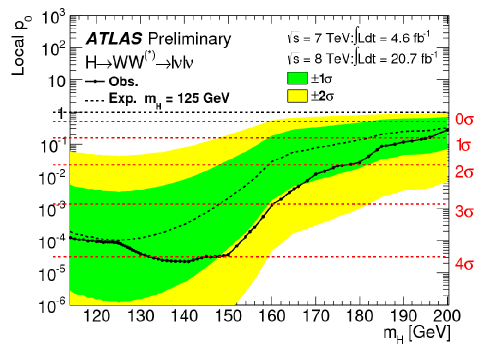
Sit back, close your eyes, and think all the way back to… last week, when physicists from the LHC experiments presented their latest results on the Higgs search at the Rencontres de Moriond Electroweak session. Yes, I know, we barely had time to digest those results. But digest we must, because this week there are even more new results coming out, from the Moriond session on QCD and High Energy Interactions. And what the experiments have presented today is, rightly or wrongly, turning a lot of heads.
The key update from today’s presentations is a measurement by ATLAS of the cross section for the Higgs decaying to two W bosons, which each then decay to a lepton and a neutrino: the \(H\to WW\to ll\nu\nu\) channel. It comes on the heels of a similar measurement presented by CMS last week. Both detectors are now reporting that they measure a strong signal for \(\ell\bar\ell\nu\bar\nu\) detection beyond the standard model (without a Higgs boson) at \(\SI{125}{GeV}\), with a significance of \(4.0\sigma\) at CMS and \(3.8\sigma\) at ATLAS. In other words, if the particles of the standard model …
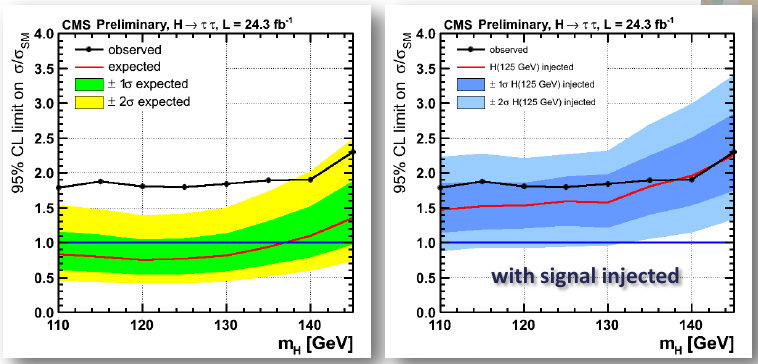
This week sees a major physics conference in Italy, the Rencontres de Moriond 2013 Electroweak session. It’s notable because the LHC experimentalists involved in the search for the Higgs boson are presenting their latest results. (There are also many other things being presented — less high-profile, but no less important!) I won’t give too many details of what has been presented, since there are plenty of other places on the web you can read about it, but certainly a quick overview is in order.
When last we left the Higgs search, it was November, and the experimentalists had just presented the results of analyzing the data the LHC had collected in the later half of summer 2012, combined in some cases with earlier data.
Of the various ways (channels) the standard model Higgs boson can decay, the experiments are looking most closely at these five:
Remember that if the particle discovered is really the standard model Higgs boson, it …
Today I learned from Reddit that the squares of all prime numbers greater than three are one more than a multiple of 24. It’s an easy enough fact to prove: first, all primes greater than 3 can be written \(6n \pm 1\), for some positive integer \(n\). The square of this number is
For all integers \(n\), either \(n\) or \(3\pm n\) is even, so \(12n(3\pm n)\) will be a multiple of 24, and the prime number squared is one more than that.
Okay, this isn’t a particularly practical fact (unless you consider number theory practical), but it’s kind of a cute proof.